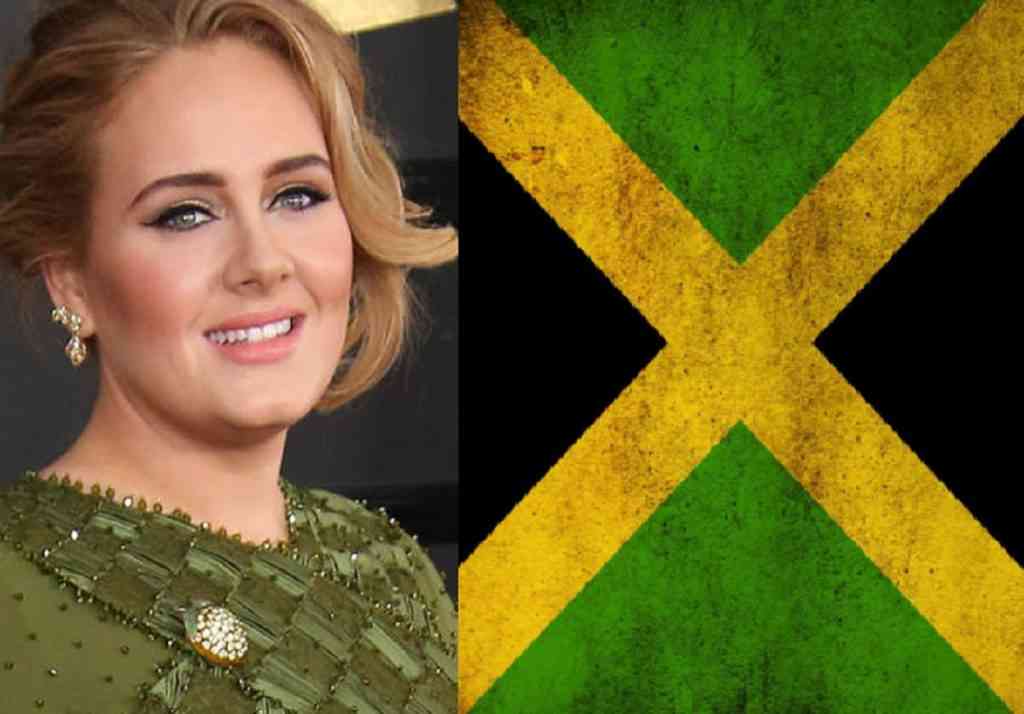Did Adele misstep, or was the criticism leveled at her over a photograph taken at Notting Hill Carnival an overreaction? The furor surrounding the singer's attire, particularly her choice of hairstyle and the Jamaican flag bikini, reignited a complex and often contentious debate about cultural appropriation in the public sphere.
The social media landscape, once a platform for unfiltered expression, has become a minefield for celebrities. One misstep, a perceived cultural misdeed, can unleash a tidal wave of criticism, leaving even the most established personalities scrambling for damage control. Adele, a name synonymous with powerhouse vocals and chart-topping success, found herself caught in precisely this storm. The photograph in question, shared on her Instagram account, depicted the singer celebrating the Notting Hill Carnival, a vibrant celebration of Caribbean culture held annually in London. The image, however, sparked a debate that extended far beyond the confines of her social media feed.
The core of the controversy stemmed from Adele's appearance in the photograph. She was wearing a Jamaican flag bikini top and sporting bantu knots, a hairstyle with deep roots in African culture. This prompted immediate and widespread discussion about cultural appropriation, a concept that addresses the adoption of elements of a minority culture by members of the dominant culture, often without proper understanding, respect, or acknowledgement of their origins. The debate, as always, was nuanced, layered, and emotionally charged. Some argued that Adele, as a white woman, was profiting from and trivializing a hairstyle with a rich history tied to the Black community. Others defended her, asserting that her intention was celebratory and not malicious, or that it was a sign of appreciation rather than appropriation. The discussion quickly escalated, engulfing not just Adele, but the broader discussion about what constitutes cultural appropriation and the permissible boundaries of cross-cultural expression.
- Laurie Metcalf Did The Actress Pass Away Exploring The Rumors
- Penn State News Roundup Lacrosse Drafts 2025 Outlook Bsd
The timing of the photograph's release, specifically during a period of heightened awareness of racial injustice and cultural sensitivity, undoubtedly amplified the controversy. The photograph, taken during her vacation in Jamaica, seemed to be an attempt by Adele to participate in the celebration, but instead it became a focal point for criticism and a catalyst for dialogue about cultural boundaries. The question of intent versus impact became central to the debate. Did Adele intend to offend, or did she simply fail to fully appreciate the implications of her choices? This question, like many in the arena of cultural appropriation, generated more questions than answers.
Adele's response to the criticism was noteworthy. Instead of immediately removing the photograph, she addressed the issue head-on, acknowledging the concerns and explaining her perspective. She stated, "I totally get why people felt like it was appropriating." Her decision to address the controversy, rather than simply erase the evidence, indicated her recognition of the gravity of the situation. By acknowledging the potential for misinterpretation, she demonstrated a willingness to engage with the concerns of those who felt offended. This was a significant step, suggesting a degree of self-awareness and a commitment to understanding the complexities of the cultural landscape.
The singer's actions also prompted differing opinions from various corners of the entertainment industry. Some celebrities defended Adele, arguing that she should not be subjected to such harsh criticism. Others offered more nuanced perspectives, acknowledging the complexities of the situation. This diverse array of responses underscores the broad impact of the controversy and the pervasive relevance of cultural appropriation in contemporary society.
- Caleb Plant Latest News Fights And Super Middleweight Insights
- Kylie Jenner Kardashians News Pics More
The Notting Hill Carnival, the backdrop for this controversial image, is itself a multifaceted event. It's a celebration of Caribbean culture, a symbol of community, and a vibrant expression of heritage. The festival, which has its roots in the struggles of the Black community in London, holds significant historical and cultural importance. It's a place where traditions are upheld, where identities are affirmed, and where the vibrant rhythms of Caribbean music fill the streets. The carnivals significance made the controversy surrounding Adele's appearance even more sensitive. Any perceived misstep could be viewed as a form of disrespect, overshadowing the festival's inherent significance.
The incident also highlighted the crucial role of context in interpreting cultural expressions. Without a complete understanding of the origins, meanings, and associated histories of the cultural elements, any attempts to utilize them can easily be misconstrued. In Adele's case, the hairstyle and the bikini top carried with them specific associations. The bantu knots carry with them deep roots in African culture, and the Jamaican flag bikini is a symbol of national pride. Without that contextual comprehension, her choices were inevitably open to criticism.
The controversy over the photo highlighted several critical points. The first is the role that social media plays in rapidly amplifying issues and shaping public opinion. It underscored the need for those in the public eye to be mindful of the cultural implications of their actions and choices. It also highlighted the ongoing conversations around cultural appreciation and appropriation. Adele's case, therefore, offers a valuable opportunity to explore the nuances of these complex issues.
The core of the issue wasnt simply about a hairstyle or a piece of clothing; it was about a deeper examination of power dynamics, identity, and representation. It led to questions of who gets to participate in which cultural traditions, how the contributions of marginalized communities are acknowledged, and what responsibility those with influence have in promoting understanding. The debate triggered a broader discussion on cultural sensitivity, and in doing so, became a significant moment in the ongoing effort to promote awareness and understanding across cultural boundaries.
The incident also served as a reminder of the ever-evolving nature of cultural expression. Cultural boundaries are constantly being reshaped, and the rules of engagement are continuously being redefined. What might have been acceptable in the past may not be today. This necessitates a degree of cultural awareness and sensitivity in public and private actions. Individuals must be open to learning from others, engaging in constructive dialogue, and showing sensitivity to the potential impact of their actions.
This situation provides an opportunity for reflection and growth, both for Adele and for everyone involved. Adele herself acknowledged the concerns and expressed understanding of the backlash. However, the discussion continues to be essential for raising awareness and promoting more inclusive practices. It is a critical part of the broader conversation about cultural sensitivity. In doing so, it serves as a reminder that, in a diverse world, mutual respect and understanding are critical.
Ultimately, the controversy surrounding Adeles photograph serves as a lesson in the complexities of cultural exchange. While intentions may be pure, impact matters. The discussion continues, and it provides an important opportunity to assess and re-evaluate the boundaries of expression.
Here's a table with relevant information about the singer Adele:
| Category | Details |
|---|---|
| Full Name | Adele Laurie Blue Adkins |
| Date of Birth | May 5, 1988 |
| Birthplace | Tottenham, London, England |
| Nationality | British |
| Occupation | Singer, Songwriter |
| Genres | Pop, Soul, R&B |
| Instruments | Vocals, Piano, Guitar |
| Years Active | 2006present |
| Record Labels | XL Recordings, Columbia Records |
| Notable Albums | 19 (2008), 21 (2011), 25 (2015), 30 (2021) |
| Awards | 15 Grammy Awards, 1 Oscar, 1 Golden Globe Award, 9 Brit Awards |
| Link to Verified Source | Grammy Awards - Adele |



Detail Author:
- Name : Damaris Stark
- Username : krice
- Email : ustreich@strosin.com
- Birthdate : 1995-08-20
- Address : 34146 Sienna Gateway Suite 083 Angelinafurt, OK 47522-4235
- Phone : 1-703-769-9825
- Company : Swift Ltd
- Job : Control Valve Installer
- Bio : Sapiente nostrum porro quia quae magnam. Laboriosam nobis excepturi fugiat qui quia corporis. Doloribus id aperiam molestiae perspiciatis id. Ea reprehenderit et similique sapiente.
Socials
linkedin:
- url : https://linkedin.com/in/bartell1991
- username : bartell1991
- bio : Praesentium nesciunt culpa veniam cumque.
- followers : 6062
- following : 2379
tiktok:
- url : https://tiktok.com/@bartellc
- username : bartellc
- bio : Maxime ut ut quisquam aut placeat sed. Exercitationem ipsum magnam atque.
- followers : 5174
- following : 1787